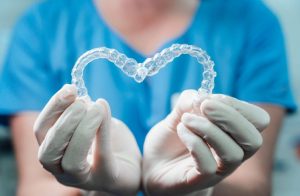Recently, we have seen various advancements in technology. Part of this is because there has been a great need to cap the spread of the COVID-19 virus while somehow keeping the economy up and running. Automation systems such as robotics and artificial intelligence (AI) have seen greater demand as of late.
Top dogs in the retail industry, such as Amazon, and Walmart have been utilizing robots to package products in warehouses and clean facility floors, respectively. The work that is often assigned to robot systems is described as those of the “dull, dirty, and dangerous” variety. This keeps human workers safe from “dangerous” jobs, especially to keep them from contracting and spreading the COVID-19 virus while still keeping operations in motion.
AI is a different beast. For one thing, the ideal standards for AI are higher and more intimidating. For a system to be truly artificially intelligent, it must be capable of doing things that humans can do. R.L. Adams writes that it must be able to learn and improve independently without being explicitly pre-programmed to do so. This is called machine learning.
A recent example of advances in AI is IBM and ServiceNow’s recently announced partnership. The two companies will be consolidating their specializations to create an advanced integrated IT service for their clients. The programs involved will be IBM’s Watson AIOps, ServiceNow’s IT Service Management (ITM), and IT Operations Management (ITOM). The service will provide automated IT solutions, hoping to speed up the resolution of IT-related problems and use machine learning to prevent future incidents from occurring. This will decrease the time spent on IT maintenance, enabling human workers to produce more meaningful work outputs.
This marks a leap in AI technology. Companies have already been employing a ServiceNow implementation partner or other cloud computing solutions to modernize their IT operations and solutions.

But where does that leave us, humans? Will AI take our jobs? How can we keep ourselves employed?
While our automation technology is nowhere near the ones seen in science fiction and dystopian media, many humans have already lost their jobs to robots and AI. This is a problem, especially today, when many have been furloughed due to the pandemic.
In 2018, the World Economic Forum (W.E.F.) predicted that by 2025, jobs in data entry, administrative work, accounting, factory work, customer service, and other similar fields would decrease in demand. And we can already see the automated counterparts taking over. There is accounting software on the internet that business owners can use for their company’s bookkeeping needs. There are IT Service Management programs that can offer roughly the same services as human IT staff. There are robots in Amazon’s warehouse that sort, pack, and ship out orders.
Experts say that both job loss and job creation will happen due to the popularization of automation. The emergence of automation in corporations is a double-edged sword. On the one hand, it threatens to take jobs from humans working in certain industries. On the other, it presents us with the opportunity to evolve as automation becomes more intelligent.
Robots should be designed to work alongside humans who have been reskilled to adapt to the workplace’s changing needs. The same should be applied to artificial intelligence. The goal should not be to create machines more powerful and intelligent than humans but to design them so that humans and automation can co-exist in the workplace.
However, to keep up with changing workplace demands, we need to invest in reskilling the human workforce. This means that both schools and companies will have to train their students and employees in new skills. The World Economic Forum predicts that the most in-demand jobs of the coming years will use critical thinking, analytical, leadership, and problem-solving skills. Data analysts, strategy, business development, and digital transformation specialists are a few of the jobs that the W.E.F. predicts will be in high demand in the next few years.
As we come to grips with the impact of the COVID-19 pandemic, we must assume that it will have lasting changes in our world economy and job landscape. To adapt to these changes, we must do two things. First, we must design automation systems in such a way that they do not displace human workers. Second, we need to invest in reskilling the workforce so that they can keep up. Our goal should not be to create automation systems intelligent enough to replace human workers but to design systems and educate humans to work together side by side.




